Indian exporters' body FIEO on Thursday said the 27 per cent tariffs or import duties announced by US President Donald Trump pose challenges for domestic players but India's position remains comparatively more favourable than that of its competitor nations.

Federation of Indian Export Organisations (FIEO) president S C Ralhan said that despite the tariffs, certain sectors in India, including apparel, gems and jewellery, leather, electronics, chemicals, plastics, and furniture, may experience a diversion of exports, potentially offsetting some adverse effects.
"While these tariffs do present challenges, India's position remains comparatively favourable.
"For instance, Vietnam faces a 46 per cent tariff, China 34 per cent, and Indonesia 32 per cent, placing India in a relatively better position than key competitors such as Vietnam, China, Indonesia, Bangladesh, Sri Lanka, and Myanmar," Ralhan said.
He added that the timely conclusion of a Bilateral Trade Agreement (BTA) between India and the US is crucial to mitigate these tariffs and provide relief to Indian exporters.
"Such an agreement could establish a structured framework for resolving tariff challenges , thereby reducing the likelihood of unilateral trade measures or retaliatory tariffs," he said.
The two countries are negotiating the agreement with an aim to conclude the first phase by fall (September-October) this year and more than doubling the bilateral trade in goods and services to $500 billion by 2030 from the current $191 billion.
The US has announced 27 per cent reciprocal tariffs on India saying New Delhi imposes high import duties on American goods, as the Donald Trump administration aims to reduce the country's trade deficit and boost manufacturing.
Imports from India are already facing a 25 per cent tariff on steel, aluminium, and auto sectors in the US. For remaining products, India is subject to a base line tariff of 10 per cent between April 5-8.
Then the tariff will rise to country-specific 27 per cent starting April 9.
From 2021-22 to 2023-24, the US was India's largest trading partner.
The US accounts for about 18 per cent of India's total goods exports, 6.22 per cent in imports, and 10.73 per cent in bilateral trade.
With America, India had a trade surplus (the difference between imports and exports) of $35.32 billion in goods in 2023-24.
This was $27.7 billion in 2022-23, $32.85 billion in 2021-22, $22.73 billion in 2020-21, and $17.26 billion in 2019-20.
In 2024, India's main exports to the US included drug formulations and biologicals ($8.1 billion), telecom instruments ($6.5 billion), precious and semi-precious stones ($5.3 billion), petroleum products ($4.1 billion), gold and other precious metal jewellery ($3.2 billion), ready-made garments of cotton, including accessories ($2.8 billion), and products of iron and steel ($2.7 billion).
Imports included crude oil ($4.5 billion), petroleum products ($3.6 billion), coal, coke ($3.4 billion), cut and polished diamonds ($2.6 billion), electric machinery ($1.4 billion), aircraft, spacecraft and parts ($1.3 billion), and gold ($1.3 billion).
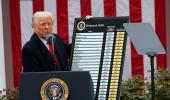
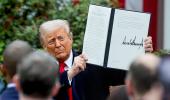

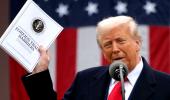




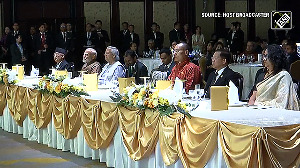
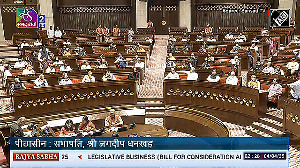
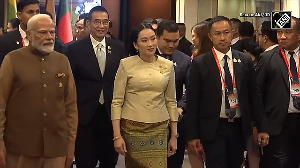
 © 2025
© 2025